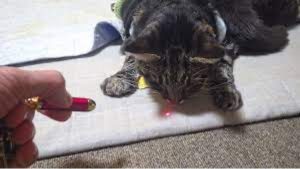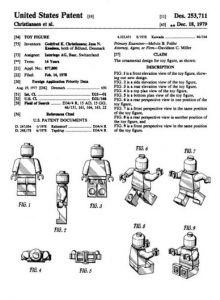Although patent law may be perceived as a very serious and sophisticated practice, it can also be fun! Other than practicing at the intersection of technical and legal knowledge, patent law also provides protection for a number of suprising and unexpected inventions. For example, a method of exercising a cat was found to meet the requirements for patentability. It is a common misconception that patented inventions must be groundbreaking or scientifically complex. In fact, inventions are patentable, or capable of achieving patent protection from the United States Patent and Trademark Office (USPTO), despite their deceptive, bizarre, or menial purposes. In the United States, inventions are patentable if directed to patentable subject matter that is new, useful, nonobvious, and. But, you may be wondering, who evaluates whether these “wacky inventions” meet these requirements and how are the patents obtained? Let me explain.

Not So Wacky Patentability Requirements
As mentioned before, inventions are patentable in the United States if they are new, useful, nonobvious, and directed to patentable subject matter. The patentable subject matter requirement refers to the bar (or automatic rejection) against patenting abstract ideas, natural phenomena, and laws of nature. The “new” requirement means that no patent, publication or public use (e.g. showing your invention to the public) has or demonstrates every aspect of the invention before the application is filed). The “useful” requirement is a low bar that simply demands an invention have a demonstrable real use, rather than an alleged use that would apply to everything . This bar is so low that basically anything that is not trash would meet this requirement. Trash is not “useful” because it is meant to be thrown out. Finally, the “nonobvious” requirement means that no combination of patents, publications or public use, before filing, would make up each and every element of the invention.
Patent Prosecution Process
Patent prosecution is the process between an applicant and the patent office to acquire a patent. Patent prosecution begins with the filing of a patent application. The patent application is prepared by an individual or on behalf of a client by a patent agent or patent attorney. Generally, a patent is divided into a specification, drawings and patent claims. The claims section of a patent is a set of sentences containing language that protects the invention. The claims are important because they characterize the exclusive right granted to the patent applicant. The specification and drawings are used to support understanding of the invention and adequate disclosure requirements that exist for patents. The USPTO determines if the invention complies with the requirements of patentability. After considering your application, the USPTO will either grant the patent, or follow up with a communication called an Office Action.

Bringing it all together: Prosecuting Wacky Patents
Considering the fundamentals of patentability and patent prosecution, how could it be that there is patent for a moustache guard created to protect your moustache during holiday feasts? Why would the USPTO consider a device for waking people from sleep using falling wood blocks, or sled pants that come with a seat to slide on? Like every other patent, these inventions started off as applications. A patent attorney or patent agent submitted the application to the USPTO. After communications, the USPTO determined each of these inventions describe patentable subject matter that is useful, new, and nonobvious.

Sometimes there are disagreements about whether the USPTO was correct in applying the patentability standards. For example, in 1999 Orange Bang, Inc. brought a legal challenge against the validity of the “Post-mix beverage dispenser” patent, owned by Juicy Whip. As the title describes, this invention discloses a beverage dispenser that deceives consumers into thinking their beverage dispensed is being stirred. The court found that the design was “useful”, even if it was created for a deceptive purpose. So, the “useful” requirement includes a use that is intentionally deceptive.. Further, at a glance it seems that sled pants would be an obvious combination of a sled and pants, but the plain meaning of the word “obvious” and the ”nonobvious” patentability requirement are not quite the same.Finally, the moustache guard seems to be odd and menial, but luckily odd or menial inventions are not barred from patentability!

Overall, these inventions were considered by the USPTO and met the patentability requirements: new, useful, nonobvious, and directed to patentable subject matter. Even wacky ideas are capable of being patented. The USPTO once stated that inventions can include “anything man-made under the sun”, which can include fun, hijinks, and even deception!

Daniel Henry
Associate Blogger
Loyola University Chicago School of Law, JD 2024